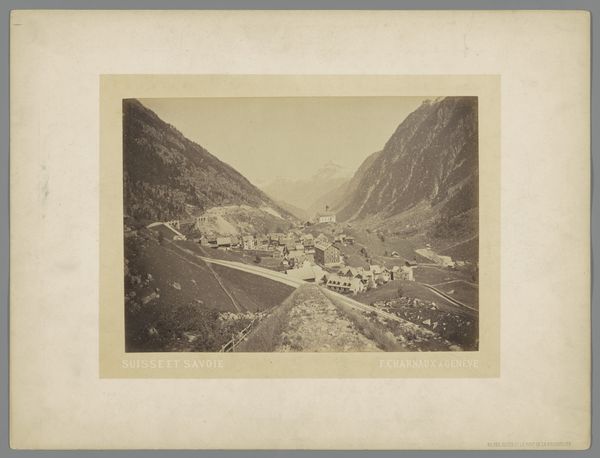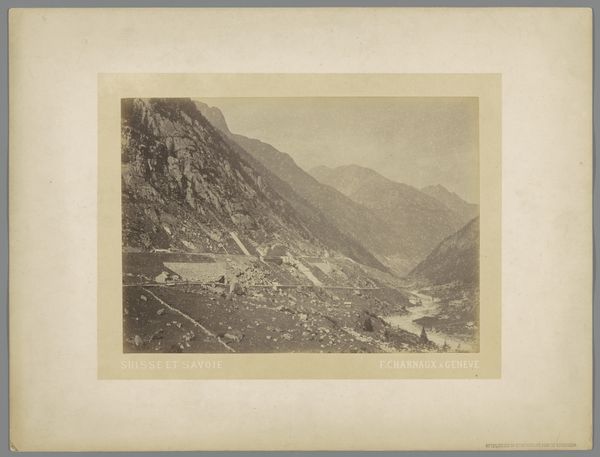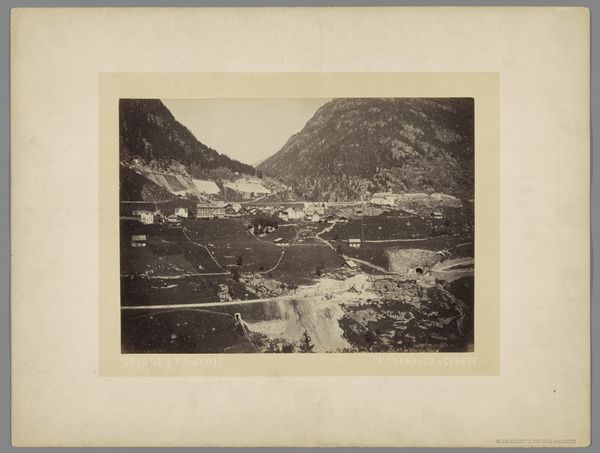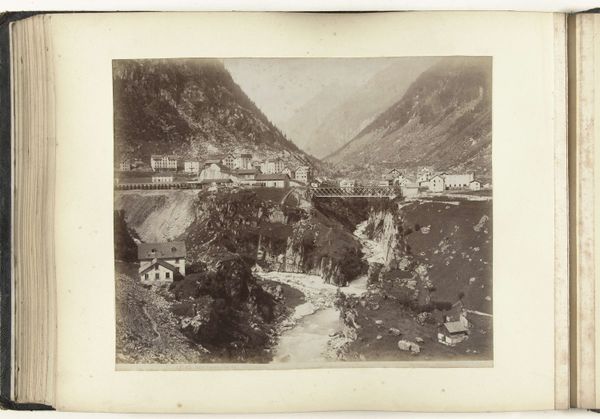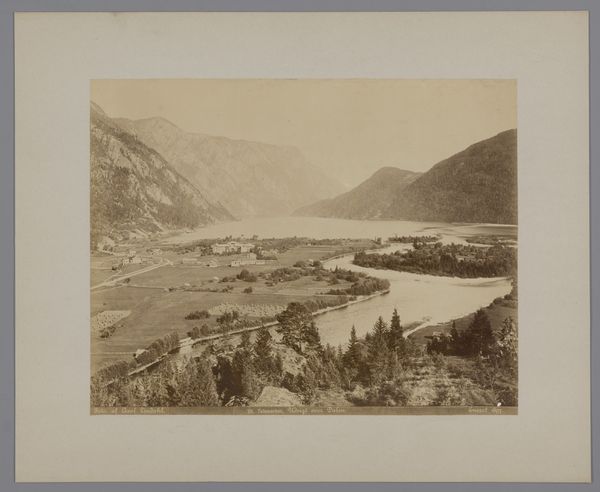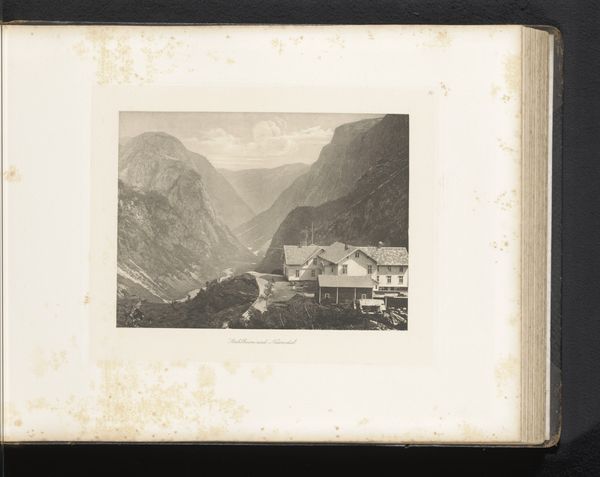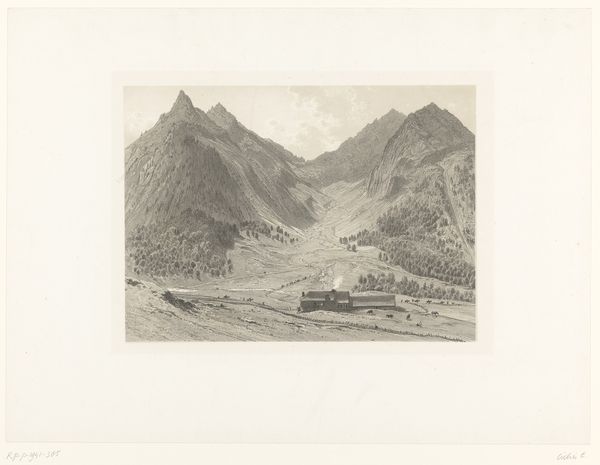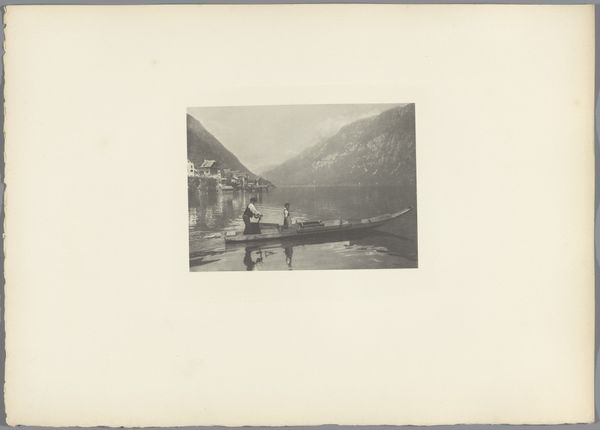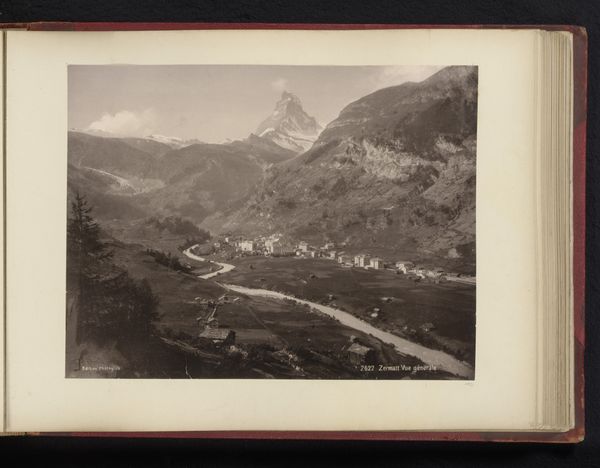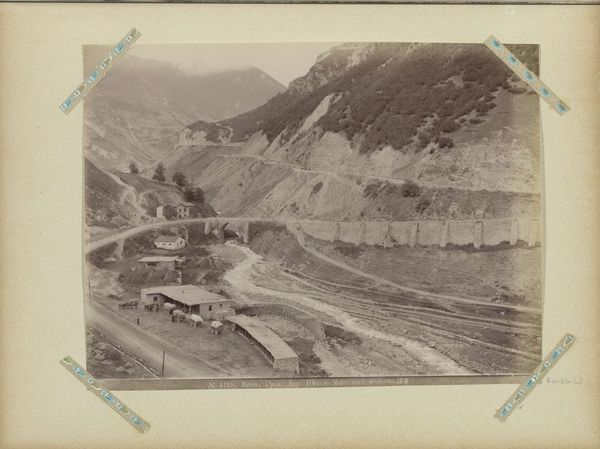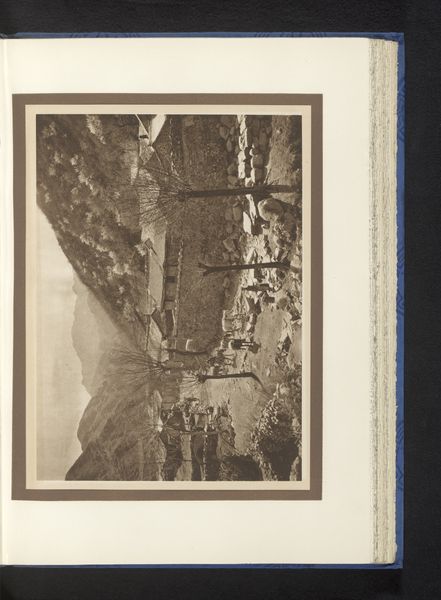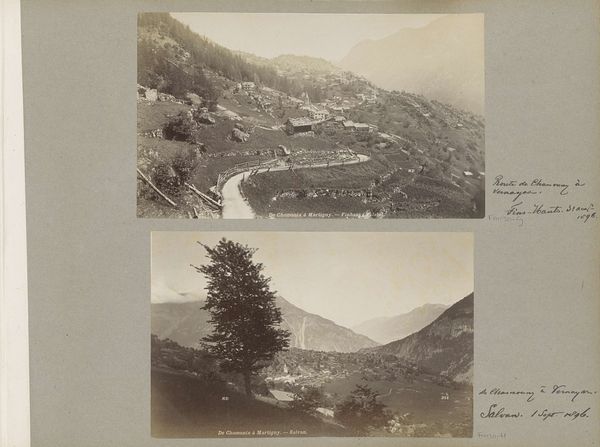
Dimensions: height 320 mm, width 420 mm
Copyright: Rijks Museum: Open Domain
Curator: Welcome. Today we’re looking at "Gezicht op Göschenen in Zwitserland," a gelatin-silver print by Florentin Charnaux, created sometime between 1870 and 1890. Editor: My first thought is that it’s hauntingly beautiful. There’s a palpable sense of isolation, even with the village nestled among the peaks. The tonal range and muted color palette contribute so much to its somber mood. Curator: The materials and production are key to understanding the image. The gelatin-silver process allowed for greater detail and sharper contrast than earlier photographic methods. Consider the social context, too: the late 19th century witnessed a burgeoning interest in landscape photography and the picturesque, alongside industrial developments creeping into even remote locations. Editor: Yes, and observe how Charnaux skillfully composes the scene. The mountains form a majestic frame, guiding our eye toward the village, highlighting a contrast between the grand scale of nature and the constructed environment of human settlement. The materiality adds such an essential temporal element here, with what I perceive to be signs of deterioration on the aged paper of the original print. Curator: The question is, to what extent is Charnaux subtly commenting on that interaction? He clearly utilizes photographic technology to mediate an idea about man's role in disrupting an environment through travel. There's the railroad to consider too: what raw materials made possible this infrastructure? What of the laborers? And, indeed, what sort of travel was taking place and what are its consequences on a place like this? Editor: True, though formally speaking, I think he's orchestrating light and shadow. He captures the textured surface of rock, while strategically revealing elements of human impact like bridges and structures within the landscape. The image asks us to observe that relationship with quiet reverence and precision. Curator: In summary, by looking at production and labor, consumption, we get a strong impression of nineteenth-century values. This image acts as both a historical artifact and aesthetic object, with layers of meaning that emerge from close inspection and consideration of social forces and the human intervention in our surroundings. Editor: Absolutely. The power lies in its delicate balance. Thank you for guiding us through the various intricate components.
Comments
No comments
Be the first to comment and join the conversation on the ultimate creative platform.
